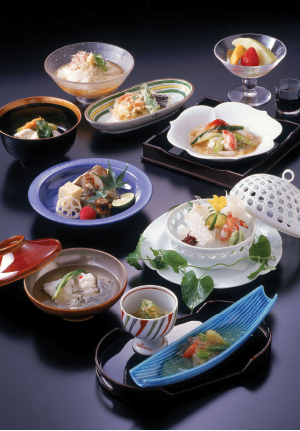 Those aficionados of Japanese cuisine who have snacked on sushi and slurped udon cannot consider themselves to be true gourmets until they have tried kaiseki ryori, that most traditional of traditional cuisine eaten in Japan.
Those aficionados of Japanese cuisine who have snacked on sushi and slurped udon cannot consider themselves to be true gourmets until they have tried kaiseki ryori, that most traditional of traditional cuisine eaten in Japan.
Kaiseki derives it’s meaning from the words for “hot stone” (seki) and “kimono pocket” (kai). Historically, it is said that Buddhist monks in strict Zen training kept a hot stone in the pocket that was made at the front of their kimonos when one half of the kimono was folded over the other. Wrapping the obi sash around the waist, created a “pocket” at the stomach level and the stone was placed here to take their mind of off their fasting and to ease the fasting pains and make them more bearable. The kaiseki ryori meal was originally served at Japanese tea ceremonies and was known as Cha (tea) ryori, and was given to guests with the idea that the tea would taste better and be more appreciated by guests that weren’t have starved. The term “kaiseki” has become the term for the light meal served during the Japanese tea ceremony. Due to its expense and rarity, kaiseki ryori is generally reserved for special occasions such as graduations or engagements or even for high-level business entertainment.
Kaiseki ryori is a seasonal meal, utilizing fresh ingredients based on the season; dishes in the springtime will feature flower motifs and may well come decorated with sakura or Japanese cherry blossoms, while autumn dishes will likely contain salmon, chestnuts and be decorated with red and yellow maple leaves. The taste of the foods in kaiseki ryori is important indeed, but presentation and aesthetic appeal is also of paramount importance and chefs are known to be fanatical and obsessive as to how the items are presented to diners.
Kaiseki ryori’s ingredients are often simple and pure in taste, cooked in ways so as to enhance and accent their natural flavors and many small dishes are presented on exquisite china to further highlight the beauty of the meal. Often decorated with tree leaves or flowers, kaiseki ryori was originally a strictly vegetarian meal, modern kaiseki dishes may have fish and meat in them. Kaiseki dishes are often very regional and will feature local dishes and ingredients hence actual meals may be very different depending on locale as well as season. In addition to decorating the dishes with seasonal leaves or flowers, edible garnishes resembling plants or animals may be used to further enhance the flavor, textures and colors of the food.
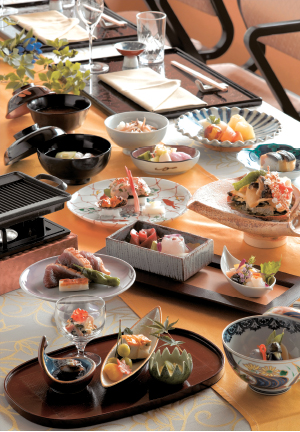 Going out for a kaiseki ryori meal is an experience for all the senses, as you will be presented a meal in many courses, ranging from as few as six to as many as eighteen courses. Methods of cooking vary wildly with some dishes steamed, some sautéed while others may be grilled or even deep-fried. Kaiseki ryori meals will often include sashimi (sliced raw fish, often tuna or salmon), tempura (deep fried vegetables or fish), rice or soup.
Going out for a kaiseki ryori meal is an experience for all the senses, as you will be presented a meal in many courses, ranging from as few as six to as many as eighteen courses. Methods of cooking vary wildly with some dishes steamed, some sautéed while others may be grilled or even deep-fried. Kaiseki ryori meals will often include sashimi (sliced raw fish, often tuna or salmon), tempura (deep fried vegetables or fish), rice or soup.
The traditional cha kaiseki course served at a tea ceremony was a pretty basic affair consisting of miso soup and three side dishes. It has evolved into a full-blown affair with an appetizer, fish course, grilled and steamed dishes and a variety of other items chosen by the chef served with a tea ceremony would typically make up the modern multi-course meal.
Although kaiseki ryori dishes are very small in size, the meal is meant to be eaten slowly and enjoyed over the course of an evening, savoring the food, atmosphere and surroundings of the restaurant. Also, given that kaiseki ryori is very expensive, ranging anywhere from ¥15,000 up to ¥30,000 with some of the highest-end restaurants costing even more than that. If those prices are beyond your means, some restaurants offer mini-kaiseki or “kaiseki-bento” which will allow you to get a taste of kaiseki ryori without getting the taste of kaiseki prices. Kaiseki ryori restaurants are known as Ryotei in Japanese and these smaller dishes are in the ¥4,000 to ¥5,000 yen range and are more suitable for lunch.
Kaiseki ryori restaurants can be found in almost all cities in Japan and kaiseki ryori is sometimes served in traditional Japanese inns and hot spring resorts, particularly in the Kyoto area.
There are some pointers and etiquette to keep in mind when eating kaiseki ryori and although not terribly complicated, they should be kept in mind in order to fully enjoy the experience and not insult the chef. Firstly dishes that come with dressings and sauces should be thoroughly mixed to properly blend and enjoy the flavors. Avoid using soy sauce or salt on your dishes; the dishes have been specially seasoned and adding soy sauce will throw off the flavors. One should also avoid adding any soy sauce or other seasoning in the sauces that come with the dishes; it is important to note that even if the dish brought to the table is simply soy sauce, often the sauce on the table is not of the same high quality that may come out of the kitchen. Sake and mirin (sweet rice wine) are often served with kaiseki ryori and a premium sake is recommended with the appetizer; these are made with polished rice and tend to be sweeter than other sake. For those who do not have the taste for sake, champagne and sparkling wines often make a good match with kaiseki ryori.
For any gourmet looking for the definitive Japanese meal, kaiseki ryori has been described as a symphony for the palate with the different dishes hitting different notes to produce a perfect score and everyone should enjoy the music at least once.
By James Souilliere
From WINING & DINING in TOKYO #34

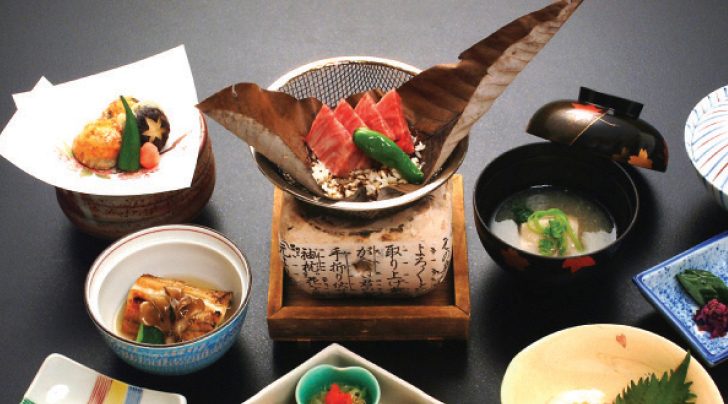




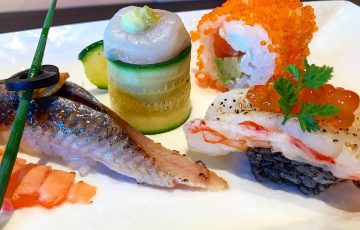
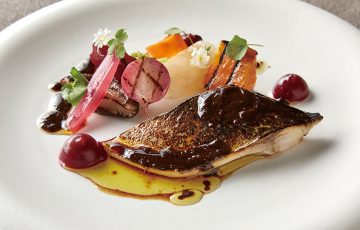
-360x230.jpg)


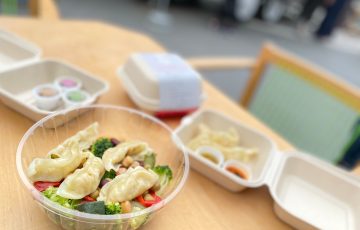



Recent Comments